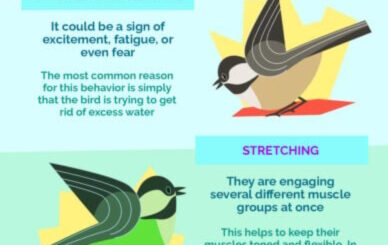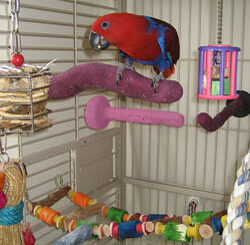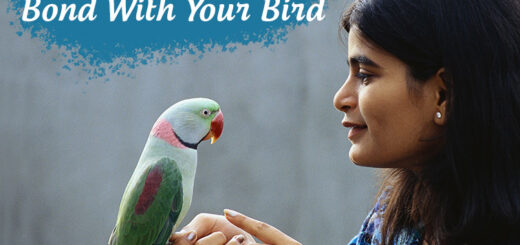Feathered Companions: A Beginner’s Guide To Bird Ownership
If you’ve ever considered bringing a feathered friend into your life, “Feathered Companions: A Beginner’s Guide To Bird Ownership” is the perfect article for you. Whether you’re brand new to bird ownership or just need some helpful tips and advice, this comprehensive guide will walk you through everything you need to know. From choosing the right bird species for your lifestyle to providing proper care and creating a nurturing environment, this article covers it all. Get ready to embark on an exciting journey into the world of bird ownership and discover the joys of having a feathered companion in your life.
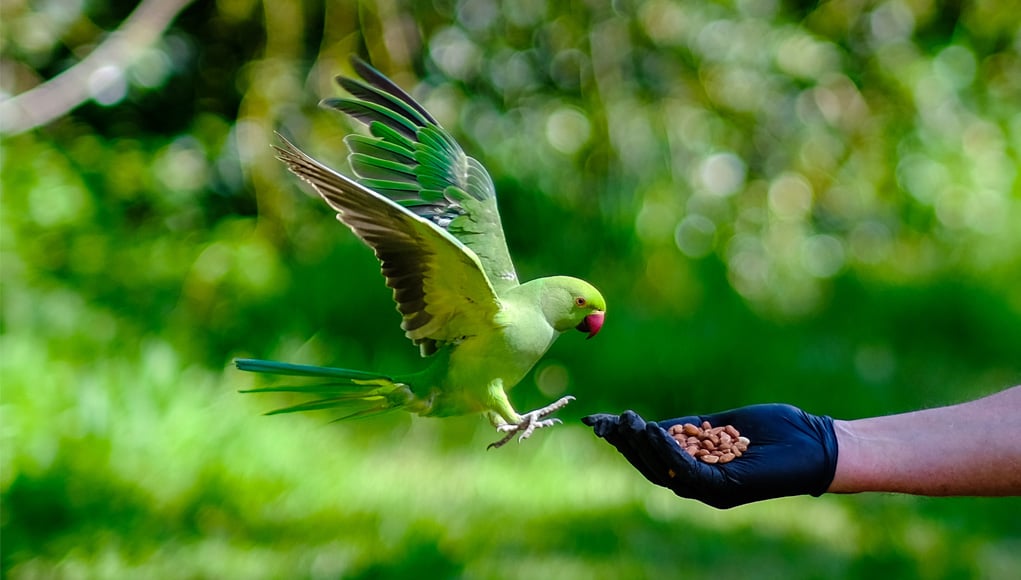
This image is property of www.thehappychickencoop.com.
Choosing the Right Bird
Consider Your Lifestyle
When choosing a bird as a pet, it’s important to consider your lifestyle and how well it aligns with the needs of different bird species. Think about the amount of time you can dedicate to your bird, as well as your daily routines and commitments. Some birds require a significant amount of social interaction, while others are more independent. Consider whether you have the time and energy to provide the necessary care and attention for your feathered friend.
Research Different Bird Species
Before deciding on a specific bird species, take the time to research and learn about the different options available. Each species has its own unique traits, behaviors, and care requirements. Some birds, such as budgies or cockatiels, are known for their playful and sociable nature, while others, like African grey parrots or macaws, are highly intelligent and require mental stimulation. Consider factors such as noise level, lifespan, and potential longevity of your chosen bird species.
Evaluate Your Experience Level
Another important factor to consider when choosing a bird is your experience level as a bird owner. If you’re a first-time bird owner, it may be wise to start with a species that is known to be more forgiving and easier to care for. Birds like budgies or lovebirds can be great options for beginners. However, if you’re experienced and have the time and dedication to devote to a more demanding bird species, you may opt for larger parrots or cockatoos.
Determine the Space Available
The space available in your home is another crucial consideration when choosing a bird. Different birds have varying space requirements. While smaller species may be able to thrive in a smaller cage, larger parrots will need a more spacious environment to spread their wings and move around. Consider the size of the cage and whether you have enough space in your home to accommodate the bird comfortably. Birds also require time outside of their cages for exercise and mental stimulation, so make sure you have a suitable area for this as well.
Setting Up a Suitable Habitat
Selecting the Right Cage
Choosing the right cage for your bird is essential for its well-being and safety. The cage should be spacious enough for your bird to move around, spread its wings, and engage in natural behaviors. Opt for a cage made of non-toxic materials, with bar spacing appropriate for your bird’s size. Select a cage with a secure lock to prevent escapes and ensure the bird’s safety. It’s also important to consider the ease of cleaning and maintenance when choosing a cage.
Providing Proper Perches
Birds spend a significant amount of time perched, so providing suitable perches is crucial. Include a variety of perches of different sizes and textures to promote foot health and exercise. Natural branches or rope perches can be great options, as they offer variety and mimic the bird’s natural environment. Make sure the perches are placed in different locations throughout the cage to allow for movement and exploration.
Setting Up Nesting Areas
Not all bird species require nesting areas, but for those that do, it’s important to provide suitable options. Research your specific bird species to determine its nesting requirements. Some birds may prefer enclosed spaces, while others may prefer open nesting platforms. Provide nesting materials such as shredded paper or straw for your bird to build its nest. Ensure that the nesting area is positioned in a quiet location, away from high traffic areas in your home.
Choosing the Appropriate Bedding
The right bedding is essential for maintaining a clean and comfortable living environment for your bird. Opt for bedding material that is free of chemicals or toxins, as birds often nibble or ingest parts of their bedding. Avoid cedar or pine shavings, as the aromatic oils can be harmful to birds. Choose non-toxic options such as paper-based bedding or natural materials like coconut fiber. Regularly clean and replace the bedding to prevent the build-up of waste and bacteria.
Ensuring Good Ventilation
Proper ventilation is crucial for your bird’s respiratory health. Ensure that the cage is placed in a well-ventilated area of your home, away from drafts or direct sunlight. Avoid placing the cage in the kitchen or near sources of smoke or fumes. Birds are sensitive to airborne pollutants, so it’s important to keep the air clean and fresh. Regularly open windows or use an air purifier to maintain a healthy environment for your feathered companion.
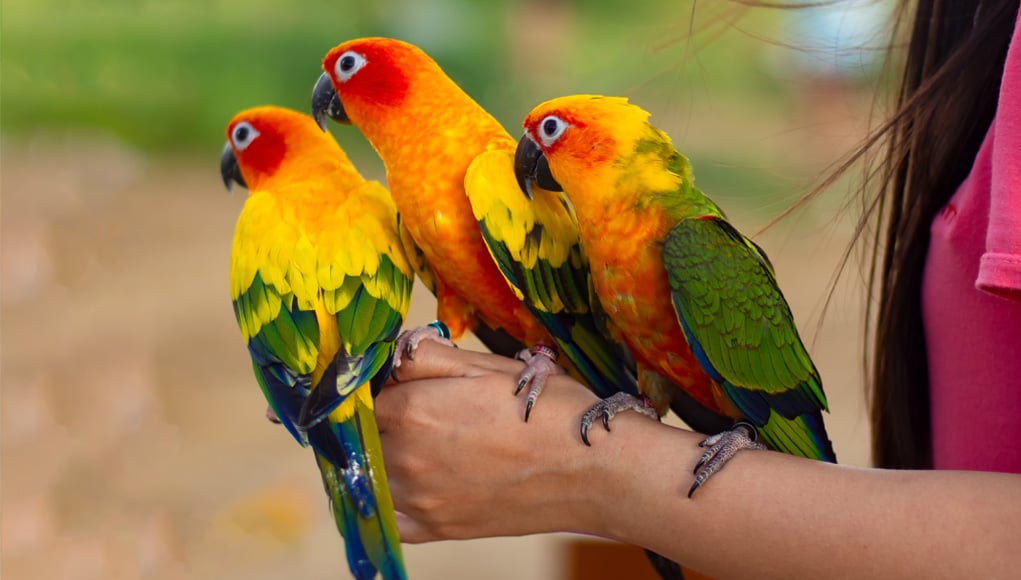
This image is property of www.thehappychickencoop.com.
Click here to check out How To Build An Aviary!
Feeding and Nutrition
Understanding the Dietary Needs
Understanding the dietary needs of your bird is crucial for its overall health and well-being. Different bird species have different nutritional requirements, so it’s important to research and provide a balanced diet. Most birds require a combination of high-quality bird feed, fresh fruits and vegetables, and occasional treats. Consult with an avian veterinarian or a bird nutrition specialist to ensure you’re meeting your bird’s specific dietary needs.
Selecting a High-Quality Bird Feed
Bird feed is a staple in your bird’s diet, so it’s important to select a high-quality option. Look for commercially available bird feeds that are specifically formulated for your bird species. These feeds often come in pellet or seed form and provide essential nutrients and vitamins. Avoid seed mixes that are high in fat or low in nutritional value, as they can lead to obesity and other health issues. Remember to regularly check the freshness and quality of the feed to ensure its nutritional value.
Introducing Fresh Fruits and Vegetables
In addition to bird feed, fresh fruits and vegetables are an important part of a bird’s diet. They provide essential vitamins, minerals, and antioxidants that promote overall health. Introduce a variety of safe fruits and vegetables into your bird’s diet, ensuring they are thoroughly washed and free of any pesticides or harmful chemicals. Offer them in small, bite-sized pieces and remove any uneaten portions after a few hours to avoid spoilage.
Providing Supplemental Vitamins and Minerals
Supplemental vitamins and minerals can be beneficial for your bird’s health, especially if their diet may lack certain nutrients. Consult with an avian veterinarian to determine if your bird would benefit from additional supplements. It’s important to provide the correct dosage and follow the veterinarian’s recommendations. Avoid self-medicating or providing excessive amounts of supplements, as this can have negative effects on your bird’s health.
Monitoring Water Consumption
Water is essential for your bird’s hydration and overall health. Ensure that fresh, clean water is available to your bird at all times. Change the water daily to prevent bacterial growth. Monitor your bird’s water consumption to ensure they are drinking enough. Any changes in water consumption can be an indication of health issues, so it’s important to pay attention to your bird’s drinking habits.
Health and Veterinary Care
Finding a Reputable Avian Veterinarian
Finding a reputable avian veterinarian is crucial for the health and well-being of your bird. Birds have specific medical needs, and not all veterinarians specialize in avian care. Seek recommendations from other bird owners or local bird clubs to find a veterinarian who has experience with birds. Schedule an initial check-up to establish a relationship with the veterinarian and ensure they are knowledgeable and attentive to your bird’s needs.
Scheduling Regular Check-ups
Regular check-ups are essential for monitoring your bird’s health and identifying any potential issues early on. Schedule routine appointments with your avian veterinarian to ensure your bird receives proper care and vaccinations. During these check-ups, the veterinarian will conduct a thorough examination, assess your bird’s overall condition, and address any concerns you may have. Regular check-ups can help prevent and detect health problems before they become serious.
Recognizing Common Health Issues
It’s important to familiarize yourself with common health issues that birds may encounter. Birds are prone to respiratory infections, feather plucking, gastrointestinal issues, and various other health conditions. Learn to recognize common signs of illness, such as changes in appetite, behavior, or appearance. Promptly consult with your avian veterinarian if you notice any abnormalities or signs of illness in your bird.
Maintaining Good Hygiene Practices
Maintaining good hygiene practices is essential for preventing the spread of diseases and ensuring the overall well-being of your bird. Regularly clean and disinfect the cage, perches, toys, and feeding bowls to prevent the build-up of bacteria. Wash your hands before and after handling the bird to minimize the risk of transferring any pathogens. Provide regular baths or mists for your bird to help keep its feathers clean and healthy.
Preventing the Spread of Diseases
Birds are susceptible to various contagious diseases, so it’s important to take measures to prevent their spread. Avoid exposing your bird to other sick birds or potential carriers of diseases. Quarantine any new birds before introducing them to your existing flock to ensure they are healthy. Keep your bird’s environment clean and provide proper ventilation to minimize the risk of respiratory infections. Consult with your avian veterinarian regarding vaccinations or other preventive measures.
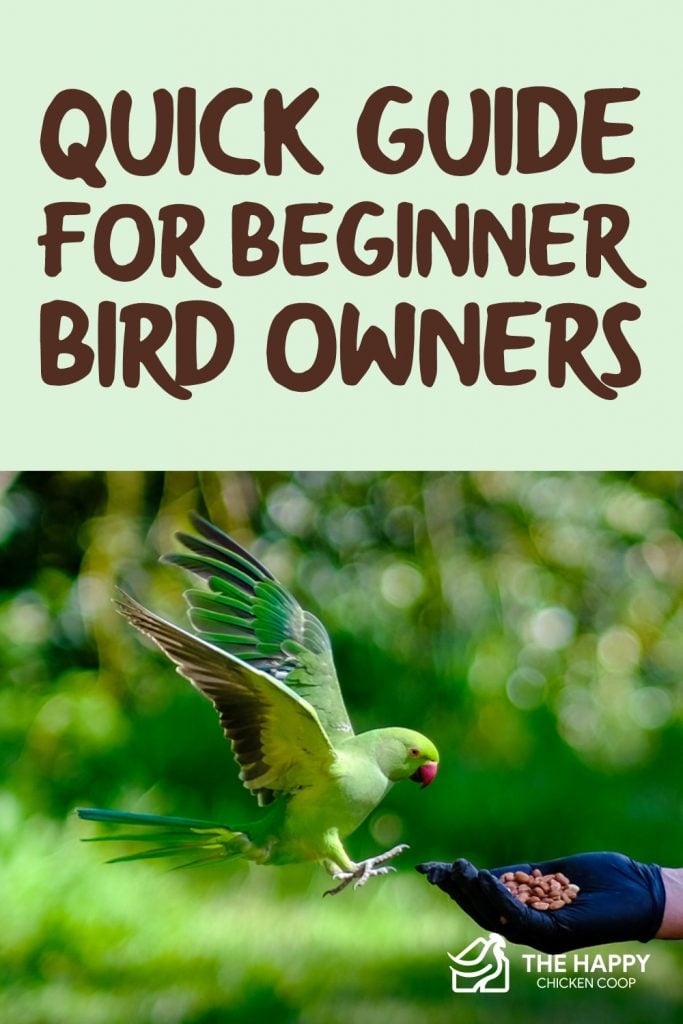
This image is property of www.thehappychickencoop.com.
Exercise and Mental Stimulation
Encouraging Physical Activity
Physical activity is important for maintaining your bird’s physical health and preventing obesity. Provide ample opportunities for your bird to engage in exercise. Allow daily out-of-cage time for your bird to fly or move freely in a safe, supervised area. Offer toys and accessories that encourage climbing, swinging, or other physical activities. Regularly change the arrangement of perches and toys to stimulate your bird’s curiosity and provide an engaging environment.
Offering Various Toys and Enrichment
Toys and enrichment activities play a crucial role in keeping your bird mentally stimulated and entertained. Birds are intelligent creatures that thrive on mental challenges and problem-solving. Provide a variety of toys that offer different textures, shapes, and activities. Rotate the toys regularly to keep your bird engaged and prevent boredom. Ensure that the toys are safe, non-toxic, and suitable for your bird’s size and strength.
Implementing Training Sessions
Training your bird not only provides mental stimulation but also strengthens the bond between you and your feathered companion. Start with basic training commands, such as “step up” or “come here,” using positive reinforcement techniques. Use treats or praise as rewards to encourage desired behaviors. Training sessions should be short and frequent, with a focus on positive interactions and mutual trust.
Organizing Playtime and Socialization
Birds are social creatures and thrive on interaction and companionship. Set aside dedicated playtime for you and your bird to engage in interactive activities. This can include gentle physical interactions, such as head scratches or gentle petting, as well as talking, singing, or playing games. If possible, consider introducing another compatible bird or pet to provide your bird with further socialization opportunities.
Creating an Interactive Environment
Aside from playtime and socialization, creating an interactive environment in your bird’s habitat is essential. Include interactive toys, puzzles, or foraging activities that encourage problem-solving and mental engagement. Hide treats or toys within their cage to provide a stimulating and rewarding experience. Consider introducing natural elements, such as branches or leaves, to mimic their natural habitat and provide additional sensory experiences.
Establishing a Routine
Setting Feeding and Sleep Schedules
Birds thrive on routines, so it’s important to establish consistent feeding and sleep schedules. Set regular times for feeding to help regulate your bird’s appetite and digestion. Ensure that fresh water and food are available at the appointed times. Similarly, establish a consistent sleep schedule, providing a quiet and dim environment for your bird to rest. Birds require sufficient rest to maintain their health and well-being.
Maintaining a Clean Living Space
Maintaining a clean living space is crucial for your bird’s health. Regularly clean and disinfect the cage and its accessories to prevent the build-up of bacteria or waste. Remove any uneaten food or debris from the cage to maintain cleanliness. Sweep or vacuum the surrounding area to minimize dust or particles that can affect your bird’s respiratory health. Regularly wash your hands before and after handling your bird or cleaning its cage.
Establishing Rewards and Discipline
Establishing a system of rewards and discipline helps your bird understand desired behaviors and boundaries. Use positive reinforcement, such as treats or praise, to reward good behavior. This can include following commands, exhibiting desired social behaviors, or engaging in playtime. Avoid punishment or negative reinforcement, as it can lead to fear or aggression in your bird. Consistency and patience are key when establishing a routine of rewards and discipline.
Building Trust and Bonding
Building trust and bonding with your bird takes time and patience. Begin by spending quality time with your bird on a daily basis. Engage in gentle interactions, such as talking softly, offering treats, or simply sitting near them. Allow your bird to come to you at its own pace and avoid forcing physical contact. The bond between you and your bird will grow stronger over time as trust is established through positive interactions and consistent care.
Implementing Positive Reinforcement
Positive reinforcement is a powerful training technique that can strengthen desired behaviors and create a positive association with training sessions. Reward your bird with treats or praise when it exhibits the desired behavior, such as stepping up onto your hand or learning a new command. Consistency and repetition are important when implementing positive reinforcement. Avoid using punishment or negative reinforcement, as it can damage the trust and bond you are building with your bird.
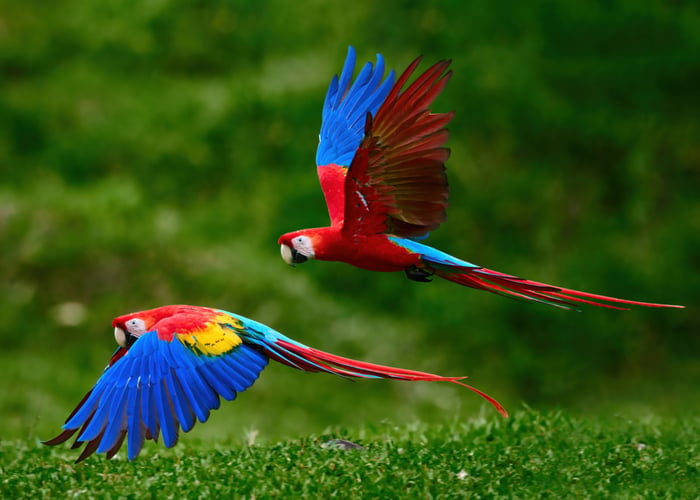
This image is property of www.thehappychickencoop.com.
Handling and Socialization
Learning Proper Handling Techniques
Learning proper handling techniques is crucial for your bird’s safety and comfort. Begin by approaching your bird slowly and gently, allowing it to become familiar with your presence. Practice the “step up” command, encouraging your bird to step onto your hand or forearm using a gentle upward motion. Avoid sudden movements or grabbing your bird, as this can cause stress or injury. With time and consistency, your bird will become more comfortable with handling.
Teaching the Bird to Step Up
Teaching your bird the “step up” command is an important aspect of handling and socialization. Begin by placing your hand near your bird’s perch and gently say the command while tapping your fingers to encourage it to step onto your hand. Offer treats or praise as a reward for successfully stepping up. Gradually increase the distance and duration of the step-up training sessions, always ensuring your bird feels comfortable and secure.
Gradually Introducing New Experiences
Introducing new experiences gradually helps your bird acclimate to different environments and situations. Start with small changes within its habitat, such as rearranging perches or introducing new toys. Slowly expose your bird to new sounds, sights, and people. Monitor its reactions and provide reassurance and positive reinforcement. Gradual exposure will help your bird build confidence and reduce stress or anxiety in new situations.
Building a Bond with Regular Interaction
Regular interaction is key to building a strong bond with your bird. Spend quality time with your bird every day, engaging in activities that it enjoys. This can include talking, singing, playing games, or simply sitting nearby. Show patience and understanding, allowing your bird to dictate the pace and level of interaction. Consistent and positive interactions will strengthen the bond and trust between you and your feathered companion.
Understanding Body Language and Vocalization
Birds communicate through body language and vocalization, so it’s important to understand their signals and cues. Observe your bird’s body posture, feather condition, and eye shape to gauge its emotional state. Learn to differentiate between different vocalizations, such as calls, songs, and alarm sounds, to understand your bird’s needs and moods. Over time, you will develop a deeper understanding of your bird’s unique communication style.
Communication and Training
Developing Effective Communication
Effective communication with your bird involves understanding each other’s cues and signals. Pay attention to your bird’s body language, vocalizations, and reactions to different situations. Speak to your bird in a calm and reassuring tone, using repetition and consistency in your commands. Establishing clear and consistent communication will strengthen the bond and trust between you and your feathered companion.
Teaching Basic Commands and Whistles
Teaching basic commands and whistles can be a fun and engaging way to train your bird. Start with simple commands, such as “step up” or “come here,” using positive reinforcement techniques. Use repetition, treats, or praise to reinforce the desired behavior. Whistling can also be a way to communicate with your bird and establish a unique form of interaction. With time and consistency, your bird will learn to associate these commands and whistles with specific behaviors.
Using Positive Reinforcement Training
Positive reinforcement training is a highly effective method for teaching new behaviors and strengthening the bond with your bird. Reward desired behaviors with treats, praise, or affection to encourage repetition. Avoid using punishment or negative reinforcement, as it can lead to fear or aggression in your bird. Always focus on positive interactions and create a safe and trusting environment for your bird to learn and grow.
Understanding Bird Body Language
Understanding your bird’s body language is essential for effective communication and building a strong bond. Observe your bird’s posture, feather position, and eye shape to gauge its emotional state. For example, flattened feathers or wide eyes can indicate fear or aggression, while relaxed feathers and blinking eyes can signal contentment. Pay attention to these cues to better understand and respond appropriately to your bird’s needs.
Addressing Behavior Issues
Birds, like any other pet, may exhibit behavior issues from time to time. It’s important to address these issues promptly and with patience. Assess the underlying cause of the behavior issue, which could be related to health, lack of mental stimulation, or environmental factors. Consult with an avian veterinarian or an experienced bird behaviorist for guidance on addressing specific behavior issues. Avoid punishment or negative reinforcement, as it can worsen the problem or damage the trust between you and your bird.
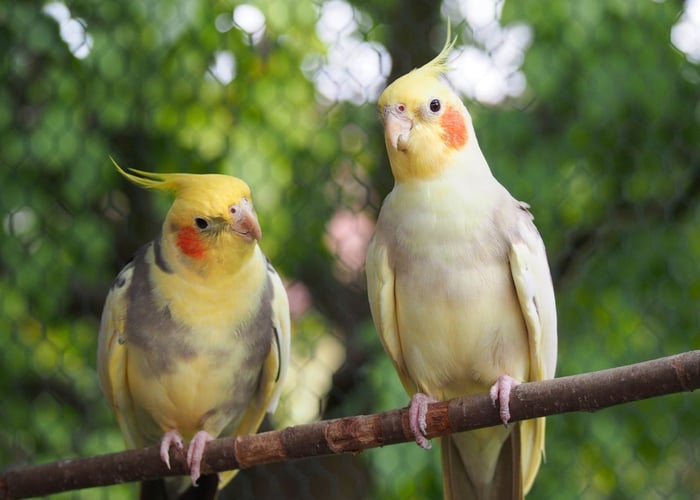
This image is property of www.thehappychickencoop.com.
Traveling with Your Bird
Preparing a Travel Carrier
Traveling with your bird requires proper preparation, starting with a suitable travel carrier. Choose a carrier that is well-ventilated, secure, and spacious enough for your bird to move comfortably. The carrier should protect your bird from drafts or sudden temperature changes. Line the carrier with soft bedding or towels to provide comfort during the journey. Familiarize your bird with the carrier before traveling to minimize stress and anxiety.
Ensuring Secure Transportation
When transporting your bird, it’s important to ensure its safety and security. Make sure the carrier is appropriately secured in the vehicle to prevent it from sliding or falling during sudden stops. Avoid placing the carrier near direct sunlight or air vents that can affect temperature regulation. Keep the vehicle well-ventilated and avoid exposing your bird to extreme temperatures. Additionally, drive carefully to minimize bumps or sudden movements that can distress your feathered companion.
Managing Stressful Situations
Traveling can be stressful for birds, so it’s important to manage and minimize stress during the journey. Maintain a calm and reassuring demeanor, as birds can pick up on your emotions. Covering the carrier partially with a towel can help create a safe and secure environment. Familiar items, such as favorite toys or a familiar perch, can also provide comfort during travel. Avoid exposing your bird to loud noises or sudden changes in the environment.
Finding Bird-Friendly Accommodations
If you’re traveling with your bird and need accommodations, it’s important to find bird-friendly options. Research and select hotels or accommodations that allow and cater to bird owners. Ensure that the environment is safe, clean, and free from potential hazards for your bird. Carry essential supplies, such as food, water, and bedding, to maintain your bird’s routine and provide familiarity during your stay.
Adapting to New Environments
Birds can be sensitive to changes in their environment, so it’s important to help them adapt gradually to new surroundings. Begin by selecting a quiet and secure area for your bird’s cage, away from high traffic areas. Introduce familiar toys, perches, and blankets to create a sense of familiarity and comfort. Gradually increase the exposure to new sights, sounds, and people to help your bird adjust.
Building Emotional Connection
Showing Affection and Love
Building an emotional connection with your bird involves showing affection and love. Birds are social creatures that thrive on physical contact and companionship. Offer gentle head scratches, soft touches, or gentle petting to demonstrate your affection. Speak softly and reassuringly to your bird, creating a calming and nurturing environment. Be patient and understanding, allowing your bird to approach and interact with you at its own pace.
Playing and Interacting Daily
Daily playtime and interaction are crucial for building an emotional connection with your bird. Engage in activities that your bird enjoys, such as playing with toys, solving puzzles, or participating in interactive games. Regularly sit near your bird’s cage and talk to it, sing, or read aloud. This consistent and positive interaction will strengthen the bond and trust between you and your feathered companion.
Recognizing the Bird’s Individual Personality
Birds, like humans, have unique personalities and temperaments. Take the time to recognize and appreciate your bird’s individual traits and preferences. Some birds may be more independent and prefer solitary play, while others may thrive on constant attention and interaction. Observe your bird’s behaviors, reactions, and preferences to better understand its individual personality. This understanding will help you tailor your interactions and care to suit your bird’s needs.
Establishing Trust and Mutual Respect
Trust and mutual respect are the foundations of a strong bond with your bird. Handle your bird gently and with care, ensuring it feels safe and secure in your presence. Respect boundaries and avoid forcing physical contact or interactions. Earn your bird’s trust by consistently providing its basic needs, respecting its personal space, and responding to its vocalizations or body language. Over time, your bird will develop a deep sense of trust and bond with you.
Understanding the Bird’s Emotional Needs
Birds have emotional needs that go beyond physical care. They require mental stimulation, social interaction, and a sense of security. Provide a stimulating and enriching environment with toys, perches, and interactive activities. Dedicate time each day for playtime or socialization. Ensure a consistent and stable living environment that minimizes stress or anxiety. By understanding and meeting your bird’s emotional needs, you will help foster a strong emotional connection with your feathered companion.
In conclusion, choosing the right bird as a pet requires careful consideration of factors such as lifestyle, research of different species, experience level, and available space. Setting up a suitable habitat involves selecting the right cage, providing proper perches, setting up nesting areas, choosing appropriate bedding, and ensuring good ventilation. Feeding and nutrition require understanding dietary needs, selecting high-quality bird feed, introducing fresh fruits and vegetables, providing supplemental vitamins and minerals, and monitoring water consumption. Health and veterinary care involve finding a reputable avian veterinarian, scheduling regular check-ups, recognizing common health issues, maintaining good hygiene practices, and preventing the spread of diseases. Exercise and mental stimulation require encouraging physical activity, offering various toys and enrichment, implementing training sessions, organizing playtime and socialization, and creating an interactive environment. Establishing a routine involves setting feeding and sleep schedules, maintaining a clean living space, establishing rewards and discipline, building trust and bonding, and implementing positive reinforcement. Handling and socialization require learning proper handling techniques, teaching the bird to step up, gradually introducing new experiences, building a bond with regular interaction, and understanding body language and vocalization. Communication and training involve developing effective communication, teaching basic commands and whistles, using positive reinforcement training, understanding bird body language, and addressing behavior issues. Traveling with your bird involves preparing a travel carrier, ensuring secure transportation, managing stressful situations, finding bird-friendly accommodations, and adapting to new environments. Building an emotional connection involves showing affection and love, playing and interacting daily, recognizing the bird’s individual personality, establishing trust and mutual respect, and understanding the bird’s emotional needs. By following these guidelines and providing the necessary care and attention, you can create a fulfilling and enriching relationship with your feathered companion.
Click here to check out how to identify Any Bird Anywhere Course


